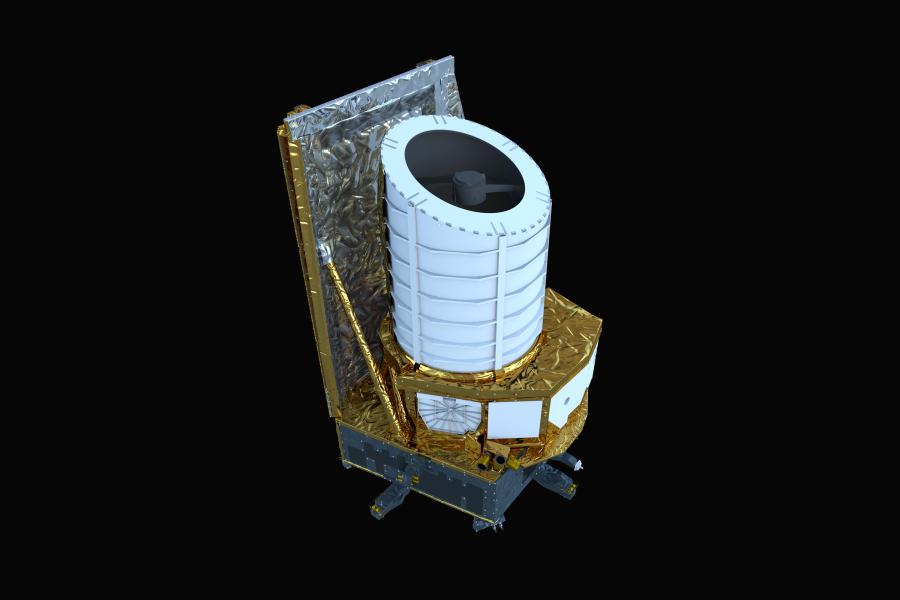The Euclid space telescope successfully launched atop a SpaceX Falcon 9 rocket on July 1 and is now poised to collect data about millions of galaxies across one-third of the sky, part of a quest to better understand the so-called dark universe.
Three Johns Hopkins scientists—Bloomberg Distinguished Professor Chuck Bennett, Professor Brice Ménard, and Associate Research Scientist Graeme Addison—are part of the Euclid's science team and will take part in the analysis of the mission's data once collection begins.
After a one-month journey to the second Lagrange point of the Earth-sun system, where the combined gravity of the sun and Earth balances the centrifugal force of the orbit, Euclid will start to survey millions of galaxies to determine the nature of the dark universe. This includes dark energy, which appears to accelerate the expansion of the universe, and dark matter, which is not made of atoms and does not interact with light.
The telescope will collect data to create a three-dimensional map of the distribution of dark matter in space whose geometry contains key cosmological information. The mission's namesake, the Greek mathematician Euclid, is known as the father of geometry.
Euclid is a European Space Agency mission with important contributions from NASA, including infrared detectors and data analysis. Bennett, Ménard, and Addison will each take part in the analysis of the data, and members of their respective research groups will have access to the data stream from the telescope.
Bennett and Addison both serve on the Galaxy Clustering Science Working Group, which will use Euclid's data from a very large number of galaxies as a "standard ruler" to gain insights into the evolution of the universe, and in particular the nature of the dark energy that currently dominates the universe.
Ménard's research focuses on novel data analysis techniques to create maps of dark matter and extract astrophysical information from the stream of images that the Euclid mission will produce.
The $1.6 billion spacecraft's payload includes a 1.2-m-diameter telescope and two scientific instruments: a visible-wavelength camera and a near-infrared camera/spectrometer. With more than 11 years of preparation building up to launch, the Euclid team consists of more than 2,000 scientists from 300 institutes in 13 European countries, the U.S, Canada, and Japan. The team plans to operate Euclid for six years, with an option to extend the mission until it runs out of propellant.
Posted in Science+Technology
Tagged astrophysics, space exploration, space@hopkins








